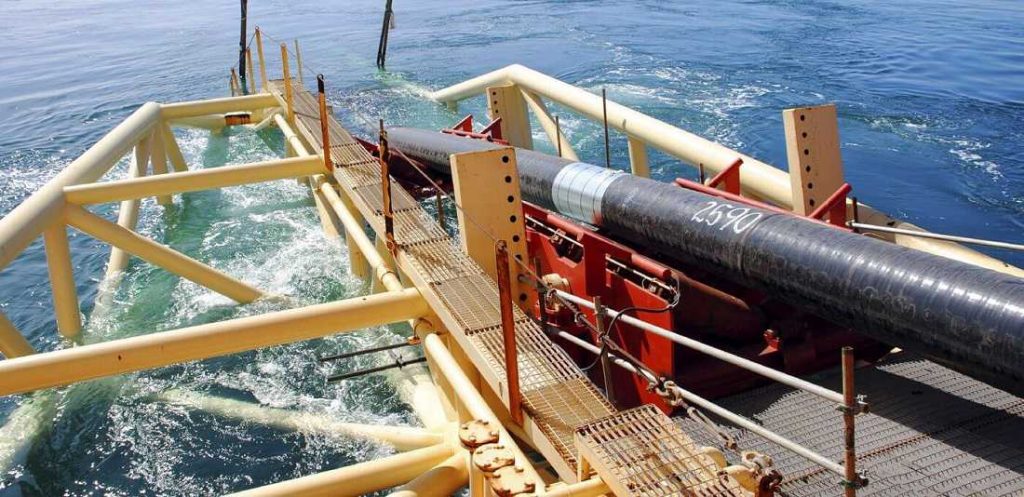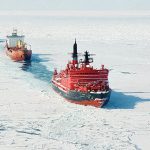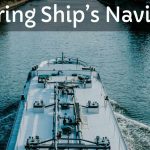The lift and drag forces on a model of a pipeline resting on the ocean floor in a uniform current were measured in a wind tunnel.
The model consisted of a pair of equal-diameter cylinders, one on top of the other, plus a flat plate extending behind them. To assure a surrounding symmetric flow pattern, the model was fixed in the center of the wind tunnel. The resulting flow was the same as for a pipeline just touching the ocean floor with a vertically uniform approach-velocity profile.
The boundary layer around the ocean pipeline most likely is turbulent. In order to enhance the similarity between the model and the pipeline, a tripping wire was used to create a turbulent boundary layer adjacent to the model.
Measurements of lift and drag were made on the upper cylinder for a Reynolds number range of 5 x 10 4 to 1.3 x 10 5.They were obtained using eight strain gages mounted on each of two strain rings, with the output read from a calibrated strip-chart recording.
Lift and drag coefficients were calculated from the force measurements. The lift coefficient maintained a value of approximately 1.4 over the Reynolds number range tested. The drag coefficient, however, rose gradually from about 0.8 to 0.9.
These results apply to moderate offshore conditions. More severe ones will be modeled, using the techniques developed for these tests, in a large wind tunnel now being built at the University of Texas at Austin.
INTRODUCTION
Citizens of the United States and many other countries are now much more aware of how man has abused his environment.
Along with the possible ecological effects of a broken pipeline, the economic problems associated with repair or replacement and with loss of production are considerable. The costs associated with broken-pipeline losses, based on Blumberg’s numbers (1, 2, 3), must surely be in the range of tens or hundreds of million dollars.
Offshore pipelines can fail through a number of causes. The one that we are concerned about in this paper is lateral movement due to large lift and drag forces. These forces arise from a steady current past the underwater pipeline. Some of the hurricane- caused damage mentioned above was surely due to the inertial forces associated with the surface waves (particularly in the shallower water depths), but much undoubtedly occurred from the lift and drag induced by the currents.
The pipeline may fail if it rolls or slides. In either case, the lift and/or drag must have been too large. Therefore, we will devote our attention to these forces.

Posted inOffshore Technology


Comments are closed